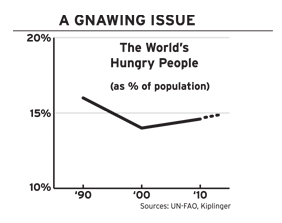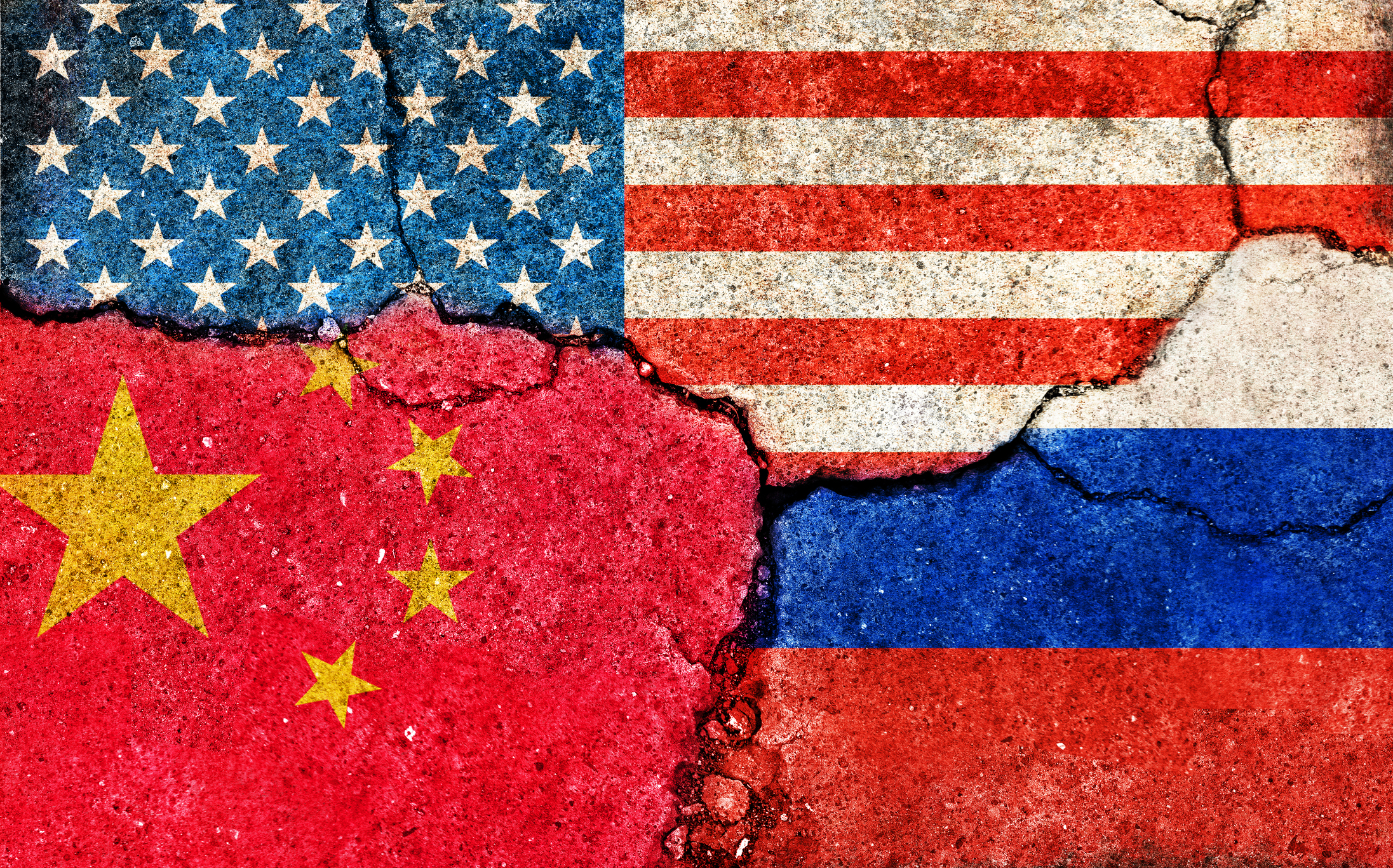A Renewed Global Focus On Helping the Hungry
Rebounding global ag commodity prices add a sense of urgency to fighting hunger.

With world hunger a growing problem, the United States and other wealthy nations are stepping up to the plate with more emergency food aid as well as promises to share technology and know-how so poor countries can do more to help their farmers grow more food.
They’ve pledged to provide $22 billion by 2012, including $3.5 billion from the U.S. for food exports plus initiatives to bolster farming in poor nations. The needs are great. The number of underfed and starving people in Africa, Asia and elsewhere will stay above a billion in 2010, a level reached for the first time this year.
But the goal of rich nations to halve world hunger by 2015 is a pipe dream. Developed nations have plenty of problems at home that require attention, preventing them from doing even more to help hungry people around the world.

Sign up for Kiplinger’s Free E-Newsletters
Profit and prosper with the best of expert advice on investing, taxes, retirement, personal finance and more - straight to your e-mail.
Profit and prosper with the best of expert advice - straight to your e-mail.
Private interests are pitching in, too. Bayer CropScience, for example, is teaming up with Asia’s largest agricultural research institute, based in the Philippines, to form a database of more than 2,000 rice strains to speed the arrival of new varieties and fight bacterial blight. Agricultural giant Monsanto is donating its biotech savvy plus its white corn seed to help a partnership in eastern Africa develop drought tolerant varieties. And the Bill & Melinda Gates Foundation has pledged $1.4 billion, with $120 million awarded in grants so far, to invest in better seeds, training, market access and policies that support small farmers. Bill Gates, the foundation’s cochair, says that “helping the poorest small-holder farmers grow more crops and get them to market is the world's single most powerful lever for reducing hunger and poverty.” The foundation’s initial grants are being targeted to produce higher yielding varieties of sorghum and millet as well as to new varieties of sweet potatoes that resist pests and have a higher vitamin content.
Rebounding global ag commodity prices will make it even harder for poor nations to feed hungry people. The index kept by the United Nations’ Food and Agricultural Organization (FAO) is at its highest level since September 2008. For dairy items, it’s up 80%. Even the recent recession hasn’t had much impact on prices in poor nations, according to a second FAO index that tracks the prices of 864 basic foods in 68 developing nations. In that food market measure, prices remain about 25% higher than two years ago in two-thirds of the countries included in the index.
Note that the FAO is also actively involved in helping developing nations overcome hunger. A joint effort by the FAO and Germany, for example, has built 45,000 small silos in 16 countries for local storage of basic foods, avoiding spillage, insects and waste.
Long term, ramped-up efforts will do more than just address hunger. They’ll help developing nations to expand their wealth, which in turn will allow them to expand trade with the U.S. and other developed nations.

Get Kiplinger Today newsletter — free
Profit and prosper with the best of Kiplinger's advice on investing, taxes, retirement, personal finance and much more. Delivered daily. Enter your email in the box and click Sign Me Up.

-
 What the Capital One Discover Merger Means for Your Wallet
What the Capital One Discover Merger Means for Your WalletThe Capital One Discover merger reshapes the credit card landscape and could impact your credit card rewards, interest rates and card perks.
By Paige Cerulli
-
 My Advice for Enrolling in Medicare Part B — Based on Experience
My Advice for Enrolling in Medicare Part B — Based on ExperienceEnrolling in Medicare is notoriously complicated and can result in penalties if you get the timing wrong. Here are some valuable tips for first-timers.
By Sandra Block
-
 The Economic Impact of the US-China Trade War
The Economic Impact of the US-China Trade WarThe Letter The US-China trade war will impact US consumers and business. The decoupling process could be messy.
By David Payne
-
 AI Heads to Washington
AI Heads to WashingtonThe Kiplinger Letter There’s big opportunity for AI tools that analyze MRIs and other medical images. But also big challenges that clinicians and companies will have to overcome.
By John Miley
-
 The AI Doctor Coming to Read Your Test Results
The AI Doctor Coming to Read Your Test ResultsThe Kiplinger Letter There’s big opportunity for AI tools that analyze CAT scans, MRIs and other medical images. But there are also big challenges that human clinicians and tech companies will have to overcome.
By John Miley
-
 The New Space Age Takes Off
The New Space Age Takes OffThe Kiplinger Letter From fast broadband to SOS texting, space has never been more embedded in peoples’ lives. The future is even more exciting for rockets, satellites and emerging space tech.
By John Miley
-
 Rising AI Demand Stokes Undersea Investments
Rising AI Demand Stokes Undersea InvestmentsThe Kiplinger Letter As demand soars for AI, there’s a need to transport huge amounts of data across oceans. Tech giants have big plans for new submarine cables, including the longest ever.
By John Miley
-
 What DOGE is Doing Now
What DOGE is Doing NowThe Kiplinger Letter As Musk's DOGE pursues its ambitious agenda, uncertainty and legal challenges are mounting — causing frustration for Trump.
By Matthew Housiaux
-
 A Move Away From Free Trade
A Move Away From Free TradeThe Letter President Trump says long-term gain will be worth short-term pain, but the pain could be significant this year.
By David Payne
-
 The Explosion of New AI Tools
The Explosion of New AI ToolsThe Kiplinger Letter Workers and consumers soon won’t be able to escape generative AI. Does that mean societal disruption and productivity gains are right around the corner?
By John Miley